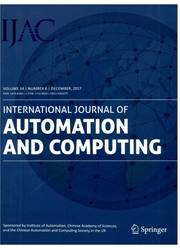

 中文摘要:
中文摘要:
机器的手眼睛协作的技巧不仅帮助机器人处理实时环境,而且影响机器的认知的基本框架。很多条途径为机器的手眼睛协作的建设在文学被开发了。然而,在婴儿以内的几个重要特征发展过程没被介绍进如此的途径。这份报纸由模仿人的婴儿的发展进步为机器的手眼睛协作建议一个新方法。工作采用婴儿大脑结构启发学习手眼睛协作的一个像大脑的神经网络系统,并且从心理学采用发展机制到开车机器人。全部学习过程被发展限制驾驶:在充分抑制的条件下面行动的机器人开始当学习系统的机器人变得稳定时,新限制被分到机器人。在那以后,机器人需要再与这个新条件行动。当所有包含的条件被克服了时,机器人能获得手眼睛协作能力。工作被试验性的评估支持,它证明新途径能驱使机器人独立地学习,并且使机器人也展出发展进步类似到人的婴儿。
 英文摘要:
英文摘要:
The skill of robotic hand-eye coordination not only helps robots to deal with real time environment,but also afects the fundamental framework of robotic cognition.A number of approaches have been developed in the literature for construction of the robotic hand-eye coordination.However,several important features within infant developmental procedure have not been introduced into such approaches.This paper proposes a new method for robotic hand-eye coordination by imitating the developmental progress of human infants.The work employs a brain-like neural network system inspired by infant brain structure to learn hand-eye coordination,and adopts a developmental mechanism from psychology to drive the robot.The entire learning procedure is driven by developmental constraint: The robot starts to act under fully constrained conditions,when the robot learning system becomes stable,a new constraint is assigned to the robot.After that,the robot needs to act with this new condition again.When all the contained conditions have been overcome,the robot is able to obtain hand-eye coordination ability.The work is supported by experimental evaluation,which shows that the new approach is able to drive the robot to learn autonomously,and make the robot also exhibit developmental progress similar to human infants.
 同期刊论文项目
同期刊论文项目
 同项目期刊论文
同项目期刊论文
 期刊信息
期刊信息
